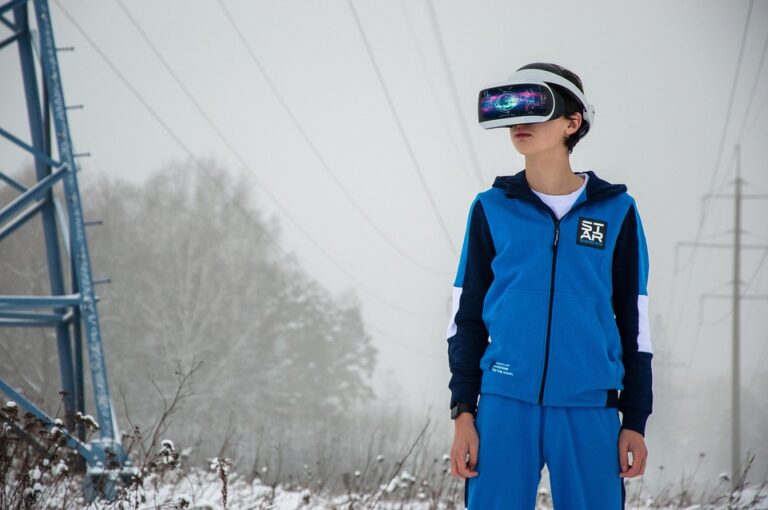From Gamers to Creators: Building Your Own Virtual Reality Experience
In recent years, the gaming landscape has seen a remarkable transformation, with virtual reality (VR) games leading the way in immersion and interactivity. Gamers are increasingly transitioning from the role of passive players to active creators in this evolving digital realm. This article will explore how to build your own virtual reality experience, offering insights, resources, and steps to get started in this captivating environment.
Understanding Virtual Reality Games
Virtual reality games are more than just entertainment; they represent an evolving form of digital storytelling and experience. According to a report by Statista, the global VR gaming market is expected to exceed $45 billion by 2028, showcasing its growing popularity and significance. Enhanced graphics and user interfaces allow players to emotionally connect with virtual environments, making them exciting canvases for creators.
The Appeal of VR Creation
Creating virtual reality experiences is accessible to anyone with a passion for gaming and storytelling. The rise of platforms like Roblox and Minecraft has shown that VR games can be user-generated, where anyone can craft worlds, characters, and narratives. As much as the technology has evolved, its appeal lies in the immersive and interactive storytelling it offers.
To illustrate, consider Roblox, which has developed a marketplace for creators, enabling users to design and sell their own virtual games. This model exemplifies how gamers can transition into creators, leveraging user-generated content. The process allows them to bring their unique visions to life and monetize their creativity simultaneously.
Steps to Building Your Own Virtual Reality Experience
1. Define Your Concept
Before diving into the technical aspects, start with a clear concept for your VR experience. Ask yourself:
- What story do you want to tell?
- What emotions do you want to evoke?
- How will users interact with your virtual environment?
2. Choose the Right Tools
Building VR games requires specific tools and software. Here are some popular options:
- Unity: A leading platform for creating VR games, Unity offers a flexible environment with extensive documentation. It supports numerous VR headsets and devices.
- Unreal Engine: Known for its stunning graphics, Unreal Engine provides advanced tools for creating detailed worlds and experiences.
Both platforms offer robust assets to help new creators navigate the complexities of VR game design.
3. Learn the Basics of Game Design
Understanding the principles of game design can significantly enhance your project. Consider these principles:
- User Experience (UX): Prioritize a seamless interaction, ensuring users can navigate your environment easily.
- Feedback Mechanisms: Incorporate visual or auditory feedback to enhance the immersive experience.
4. Experiment and Iterate
As you build your VR experience, don’t hesitate to experiment and make changes based on user feedback. A strong iterative process can help refine gameplay mechanics and improve overall quality.
5. Publish and Share
Once your VR experience is polished and play-tested, consider publishing it on platforms like Steam, Oculus Store, or your website. Share your work through social media and engage with the community to attract users to your creation.
Engaging with the Community
Connecting with fellow creators can help you refine your skills and share your experiences. Platforms such as Discord, Reddit, or dedicated forums provide spaces for discussing tips, seeking feedback, and collaborating on projects. Networking with other creators not only fuels creativity but also opens doors to innovative partnerships.
Multimedia Suggestions for Your VR Project
-
Screenshot of Your VR Environment: Capturing striking visuals from your VR game can attract users and illustrate your project’s potential.
- Alt Text: Screenshot showcasing an innovative virtual reality game environment.
- Video Render: A video showing off gameplay mechanics and user interaction could serve as a compelling showcase on your social platforms.
- Alt Text: Gameplay video rendering a thrilling virtual reality experience.
The Future of Virtual Reality Games
As VR technology continues to advance, we are likely to witness even more innovative possibilities within virtual reality games. Statistics show that the number of active VR users is projected to reach concerted exponential growth, highlighting a vibrant community ripe for new content and experiences.
For aspiring creators, this is the perfect time to dive into building your own virtual reality experiences. With the right tools, mindset, and community support, anyone can take their passion for gaming to new heights, contributing to the ever-expanding world of VR creativity.
Conclusion
Transitioning from gamer to creator in the world of virtual reality games is an exciting journey filled with learning and growth. By defining your concepts, mastering essential tools, and actively engaging with the community, you can turn your ideas into reality.
To further explore the vast possibilities in VR and become a part of this burgeoning field, consider checking out existing articles on Buzzo.live such as Exploring the Best VR Headsets of 2023 and The Evolution of Game Design in VR. For more detailed insights, you can also visit authoritative platforms like Statista for industry insights and trends.
By harnessing the bold energy of the VR revolution, you can create experiences that resonate with others — transforming from gamer to creator in unparalleled ways!


